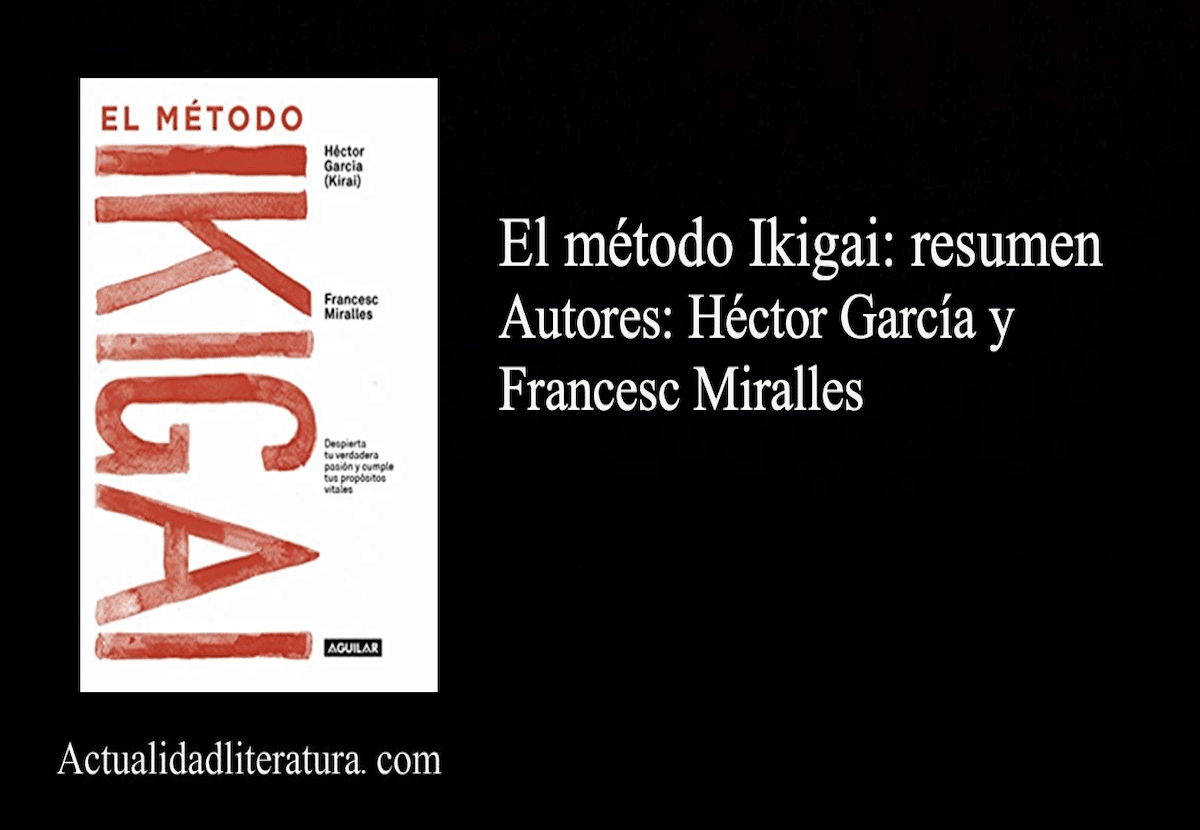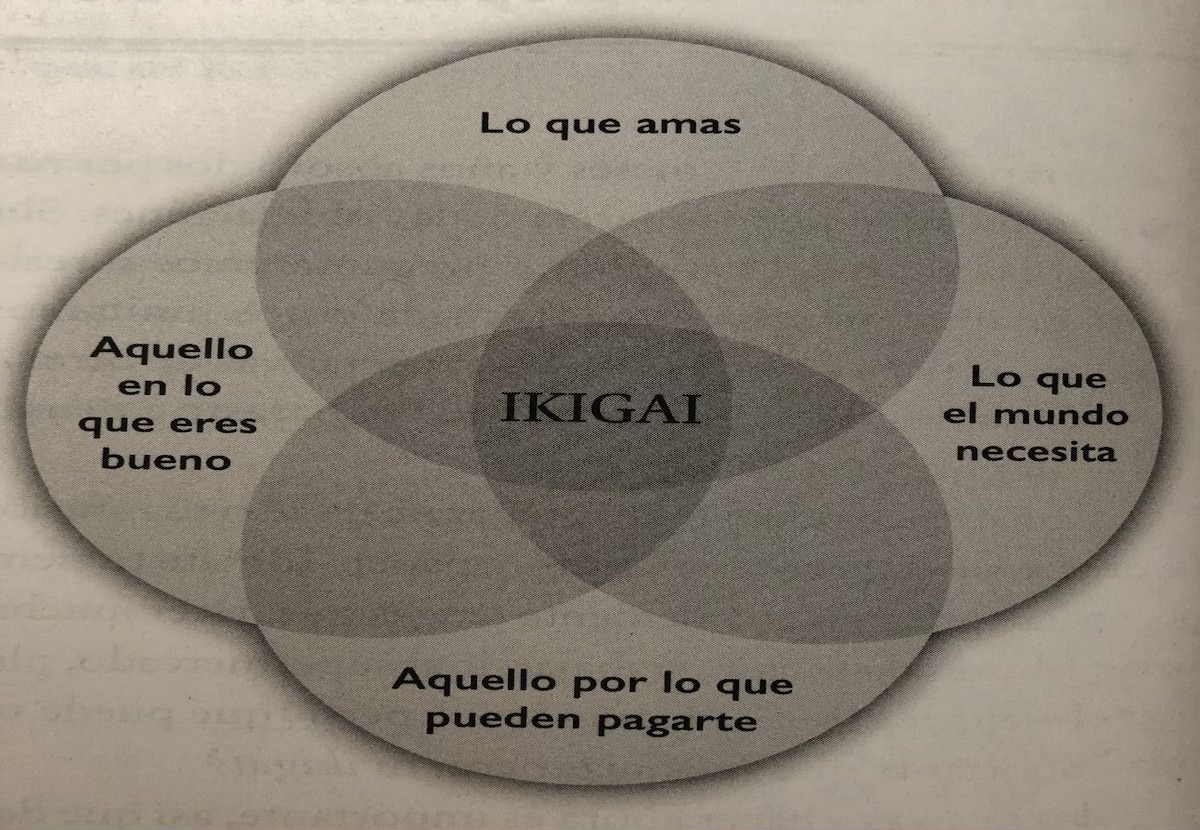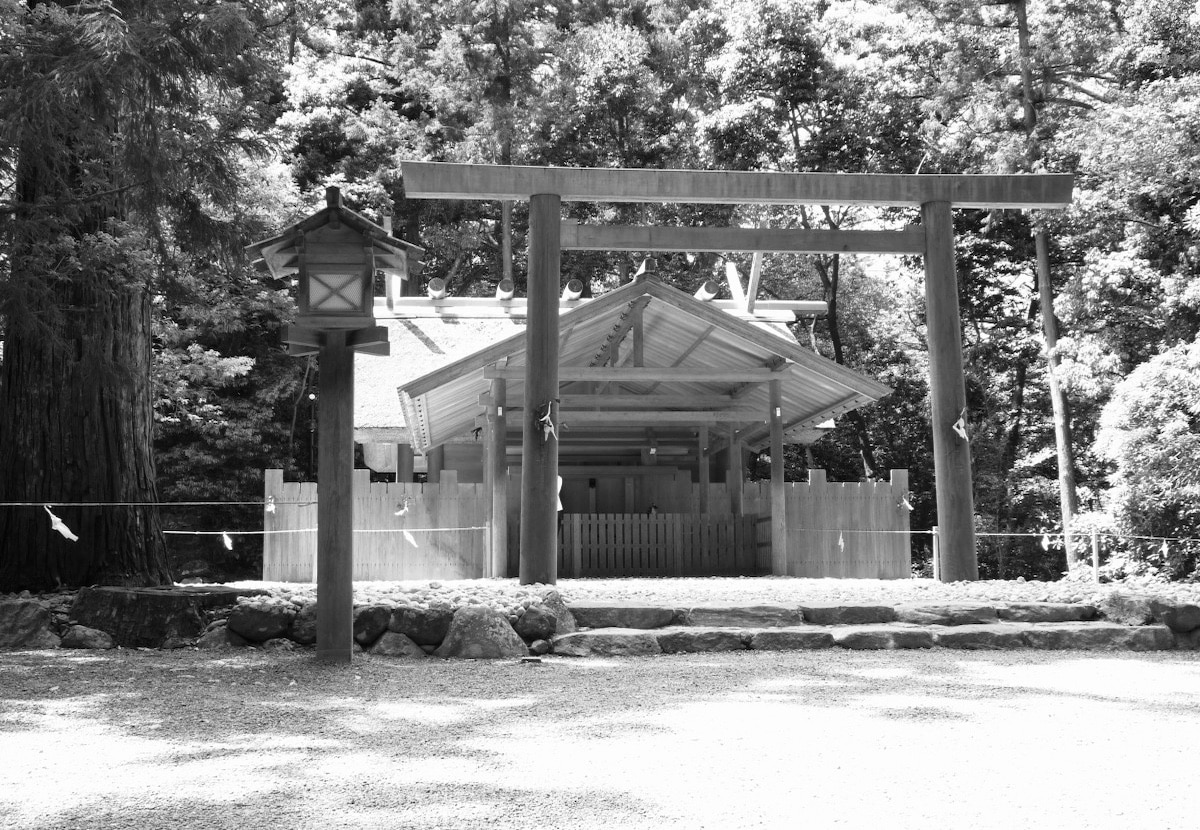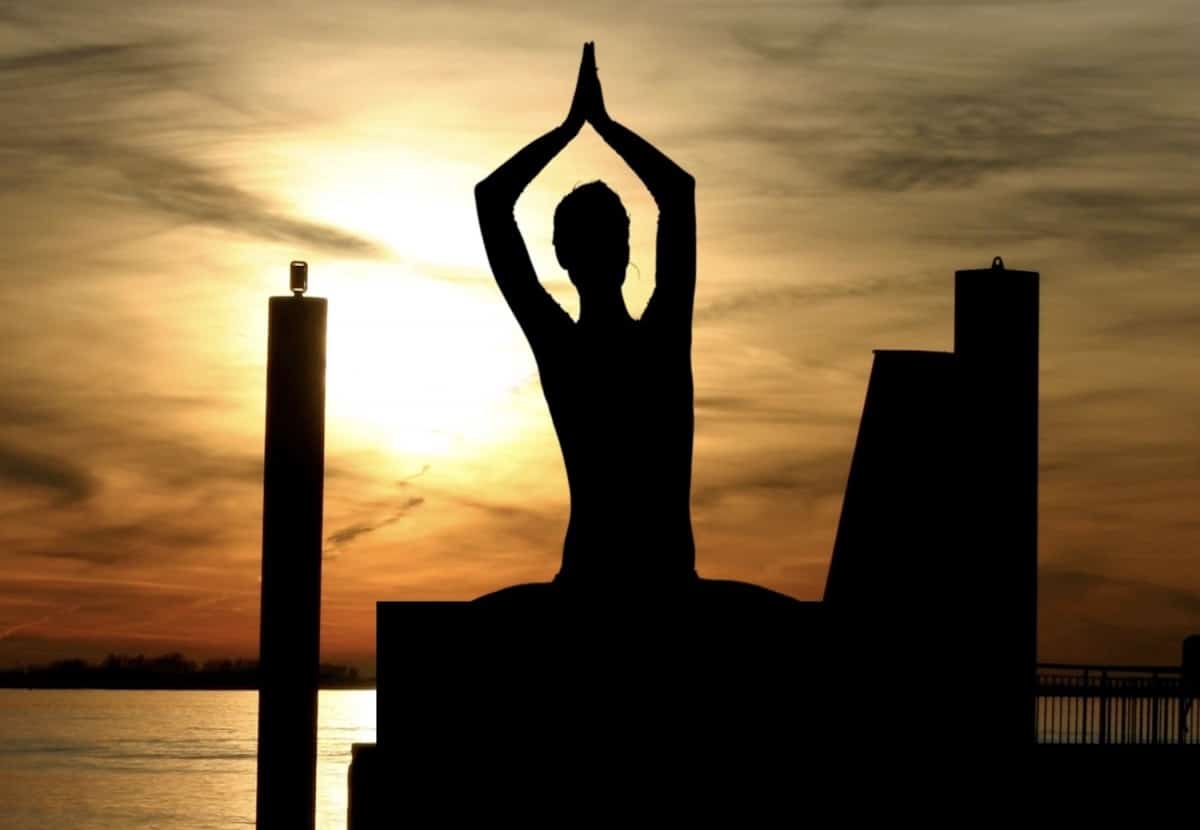
the ikigai method, published by Penguin random house in 2017, is a practical guide to help you achieve your ikigai or your life purpose. It also has an edition in Catalan.
We find this ancestral philosophy, thought or knowledge in Japan. And thanks to the work of authors such as Héctor García or Francesc Miralles (among others), what was a secret a few years ago is becoming more and more a reality in Western culture. Because we all want to live doing what makes us happy. Y If you want to know more about the ikigai concept and, especially, bring it to your life, we recommend reading this essential.
the ikigai method
Ikigai
Ikigai it's a japanese word which we can divide into two parts: Iki, "alive" or "being alive", and cheerful, "what is worthwhile and has value". In a simple way it can be defined as your “reason for living”.
We all have an ikigai or a life purpose. Our existence goes beyond sleeping, eating, reproducing and being safe. Once our basic needs are satisfied and covered, as human beings we need hacer, have a life that completes us. That of filling our time is only an indication of how empty our life is. Ikigai is just the opposite. It means keeping busy.

Photograph taken from The Ikigai method (Debolsillo, 2020).
This graphic shows the elements that make up the concept of ikigai. What you love and what you are good at is called PASSION. What you love and what the world needs is you MISSION. What the world needs and what they can pay you for is VOCATION. And what they can pay you for and what you're good at is PROFESSION.
That you don't know what your ikigai is? Don't worry, looking for it can be an ikigai itself. Nor is it necessary to have the same ikigai for the rest of your life. In fact, the horizon is vast, the possibilities endless.
In addition to finding your ikigai and putting it into practice, from here we suggest you get the first book on this way of life that Héctor García and Francesc Miralles wrote previously and also jointly: Ikigai: Japan's Secrets to a Long and Happy Life
Ikigai is perfectly defined in this first book. This is how its authors describe the secret to a long and happy life:
Perhaps the greatest secret of longevity is to always be busy dedicating our time to activities that we love.
Insert your ikigai in your life and the shinkansen effect
Ideally, our profession or our daily commitment is directed at our ikigai. But, of course, this is aiming very high. The book is a method that gives you 35 principles or keys to insert your ikigai in your life, and that it occupies a main place, beyond your work if this is not your ikigai (which happens to the vast majority of the population on the planet).
However, it does not call for a defeatist attitude either. The book is also a method for you to find your life purpose so that you live it, as a hobby, or as your job. Perhaps you can orient your life so that your ikigai occupies a good part of your day, or even that your work ends up becoming your ikigai.
the ikigai method it is eminently practical. The book is divided into 35 stations with exercises; as a tour that takes you to live your ikigai. As if it were a train. Because the method is based on the so-called shinkansen effect: a revolutionary system applicable to different areas that supposes pose the impossible and bring it about through radical change. This is how the engineering work that the Tokyo bullet train needed to reach 200 km/h was achieved.

A journey through our future, our past and our present
Through main concepts such as “try your best to achieve a goal” and “never give up” we take a trip through our future, past and present through 35 different seasons. All of them provide practical exercises that will certainly help us to get to know ourselves better. This is key if we want to develop our ikigai.
Through our projection of the future we design small and large personal plans with which to develop our ikigai in the present. It is the longest part of the book and perhaps the most important because it also gives guidelines on how to be strong in our purpose and advice to be disciplined and in harmony with our life and our passion. Emphasizes self-knowledge to achieve our ikigai. The book takes the city of Tokyo as an example.
The honesty of childhood takes us to the past. Searching in our inner child we can find the most authentic parts of who we are and that adult life has been able to hide in a certain way. Likewise, nostalgia means going back to the past in search of the origin of our happiness. The past gives us perspective of who we are today. The authors take us to Kyoto, a symbol of Japanese tradition and the country's former capital.
As for our present, it is oriented to the synthesis of what we project, on the one hand, and what we are and what we have lived, for other. There are some interesting tips that will help us unfold our ikigai and live it serenely in complete happiness. In this part we will get to know the Ise Shinto shrine, which is destroyed and built every twenty years; It has a total of 62 reconstructions. Thus we downplay the past, living in the present, looking forward to the future.

Some practical tips from the book
- To know your ikigai you need to know what you like. Sometimes it's hard to get there and maybe we need to identify what we don't like at all. Starting with what we don't like, we can know what we are passionate about. Reverse sense.
- Work on the concept of imitation of the people we admire. If there is any art and/or task that you want to perfect, look for the best in that field and that they are the reason for your motivation. It examines your work, detects its weaknesses and offers improvements. Imitate them and overcome them.
- Write. The paper has a magical force. Take a few minutes in the morning to be thankful and a few minutes at night to recognize what great things happened or what you could have done to make the day better.
- Other top tips like set goals, practice 10000 hours to achieve excellence, create good routines, search for feedback, reflecting on your childhood dreams, being kind, staying present, practicing concentration or taking risks from time to time, will also be useful to work on your ikigai.

Conclusions
Search, discover and power. Find your ikigai, explore it and practice it. Practice, practice and practice. Whether it is a hobby or a job, during your ikigai you will live in perfect harmony with yourself. You will dedicate your time to an activity that will connect you with your life purpose and, therefore, with your essence. You will live calmly, in harmony and with coherence.
the ikigai method There are 35 ways to get closer to your passion. But don't forget that ikigai it is the opposite of a goal. It is the path that matters. It's a journey, so we must not forget to look out the window. We continue on the train. You do not expect to arrive at the destination, but to enjoy the landscape.
About the authors
Héctor García (1981), nicknamed Kirai, lives in Japan since 2004. He is passionate about Japanese culture, past and present Japan. Of course, he speaks Japanese, although he prefers to say that he is still learning. An engineer by profession, he works for a multinational where he earns his living while in his spare time he continues to discover Japan. He is currently writing his sixth book. Héctor García has written different books related to Japan and its philosophy of life.
Francesc Miralles was born in Barcelona in 1968. He is a journalist specializing in personal development and spirituality. Y today it is dedicated to spreading the ikigai philosophy throughout the world: Gives lectures and accompanies through courses and workshops. Activities that he combines with his journalistic work in media such as El País, Cadena Ser o National Radio of Spain, and with personal projects. Your book lowercase love has been translated into 23 languages.
